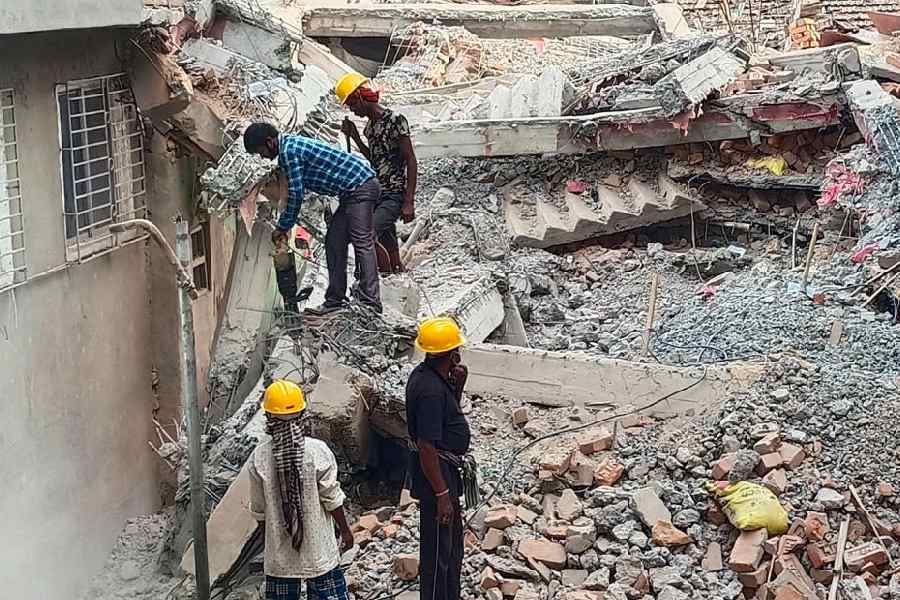The Calcutta Municipal Corporation (CMC) on Friday discussed several measures to curb the menace of illegal buildings, the foremost among them being the need to define what constitutes a “minor deviation” from the building permit.
“Minor deviation” is a term in Building Regulations of the CMC that is often used to regularise or legitimise illegal structures.
The absence of a definition of “minor deviation” leaves room for even very large deviations from the building permit to get regularised.
“The provision of regularisation is present to let people who have built a toilet or a small room or extended a room little bit retain the changes by paying a steep fee,” said an official.
“We are opposed to allowing an entire floor or an entire building for which there is no permit to get regularised. For that we need to define ‘minor deviation’,” said an official.
The issue came up at a meeting chaired by mayor Firhad Hakim. Senior advocates of Calcutta High Court and an additional commissioner of Calcutta police were among those who attended the meeting.
The CMC has also created a standard operating procedure (SOP) for the engineers of its building department. According to the SOP, civic engineers have 15 days after getting a complaint to decide whether an illegal structure can be retained or should be pulled down.
Engineers in the building department said buildings with minor deviations from the building permit are allowed to be retained, while the others are pulled down. “This decision has to be taken within 15 days,” said an engineer.
The SOP, finalised on Friday, mentions that sub-assistant engineers have to detect illegal structures and serve
a stop-work notice to owners or promoters. A copy of the
notice must be sent to the officer-in-charge of the local police station, the deputy commissioner of police of that division and the joint commissioner of police (headquarters).
Assistant engineers will prepare a “demolition sketch” and lodge an FIR if construction does not stop despite the stop-work notice.
Such cases will be brought to the notice of the commissioner of the CMC, who will then communicate it to the city’s police commissioner so that the local police station is prodded into taking action against the builder or the owner.
CMC officials said regularisation was allowed only in cases of minor deviations and after a structural engineer certifies that the deviation poses no risk to the stability of the building.
“Friday’s meeting discussed the need to define a minor deviation. How much deviation from the building permit is actually minor? Everyone at the meeting said it’s time to define a minor deviation,” said Anindya Kishore Routh, a councillor and a lawyer who attended the meeting.
Hakim later said: “We discussed whether the CMC Act needs to be amended to give more power to the CMC (to take action against illegal buildings).”
Some of those who attended the meeting said they also discussed a proposal to scale up punishment for illegal construction.
The CMC Act has a provision for imprisonment for up to five years if one is found to have built an illegal structure. There was a proposal to increase the jail term to seven years.
